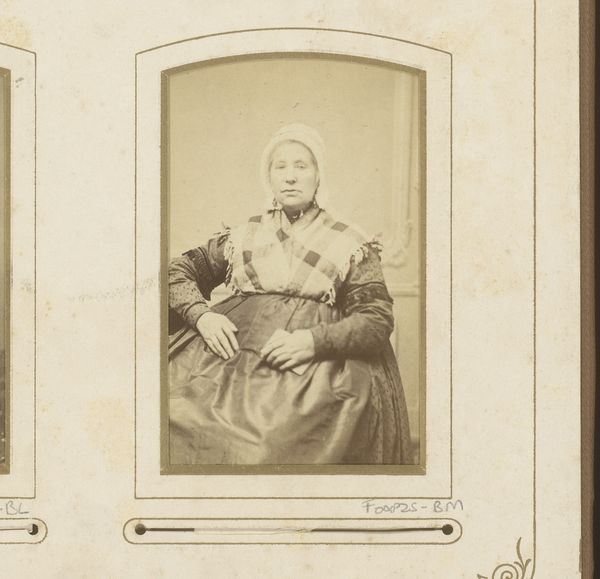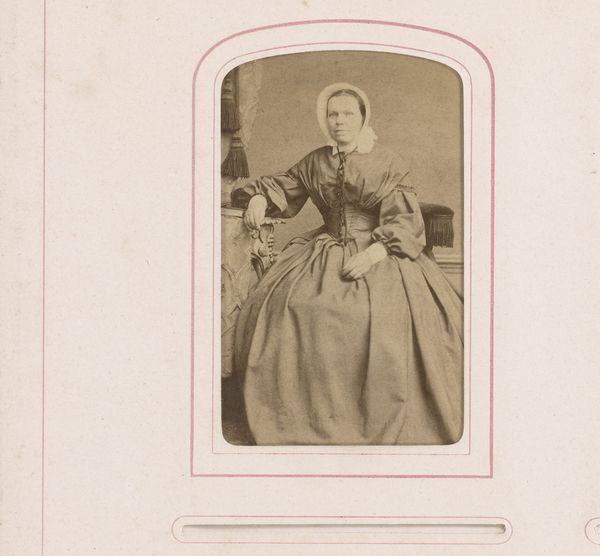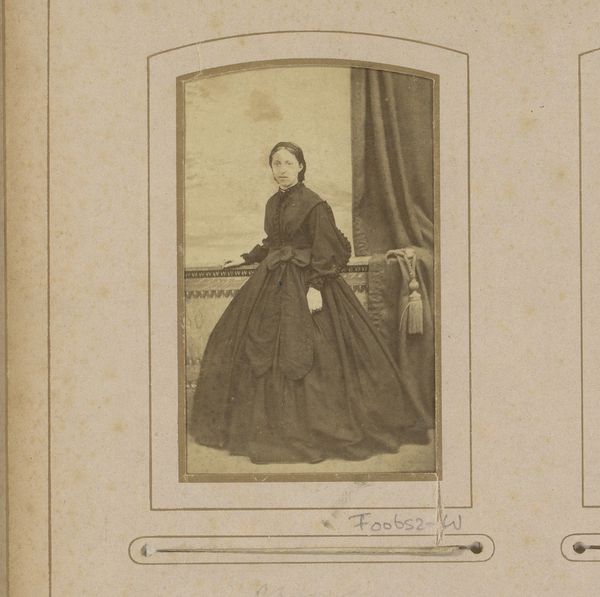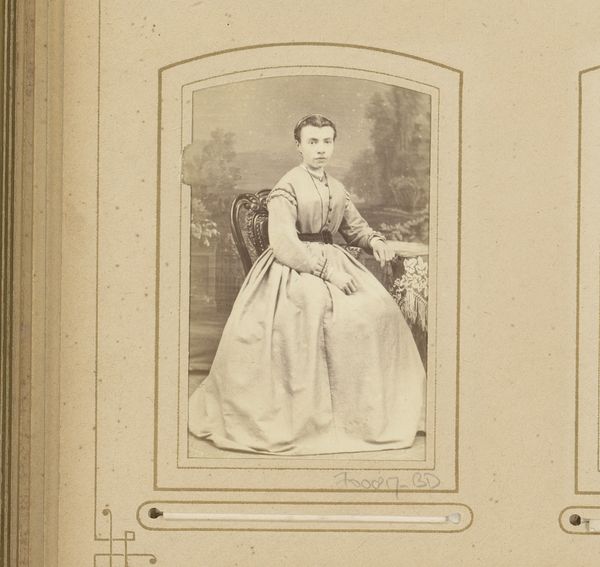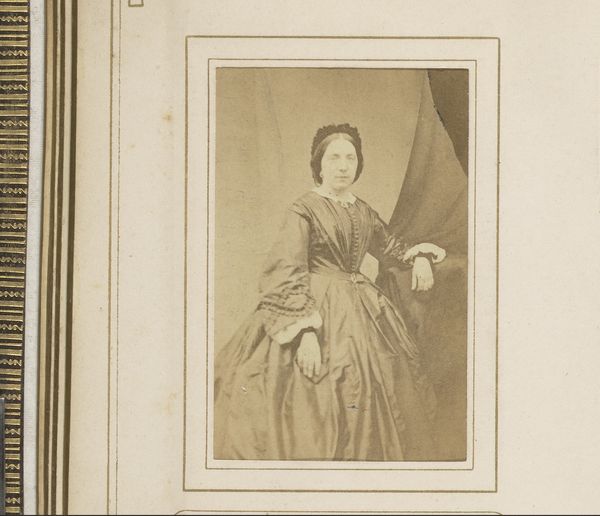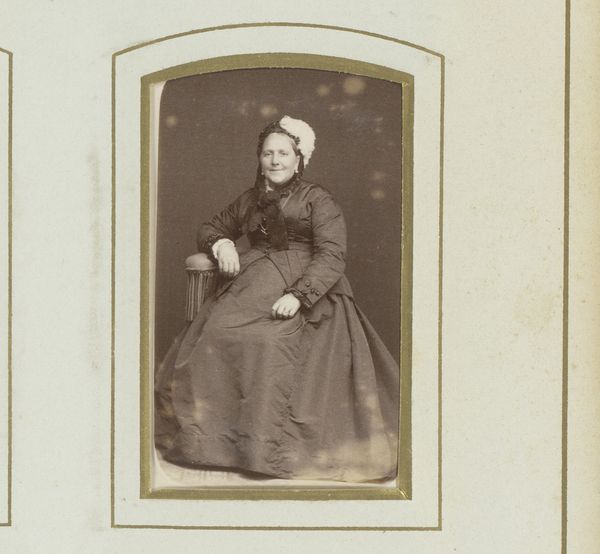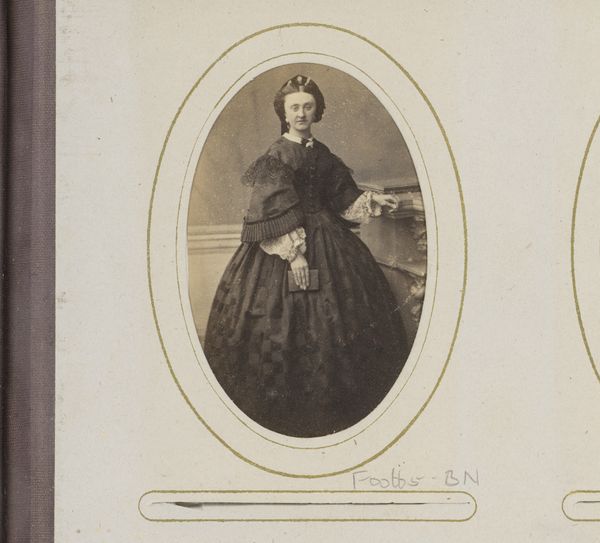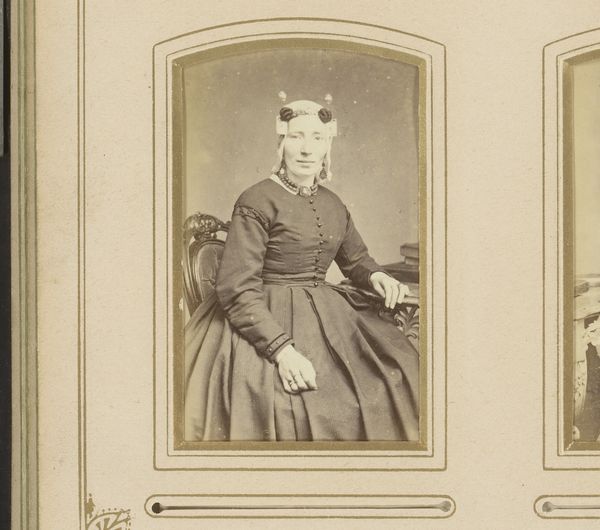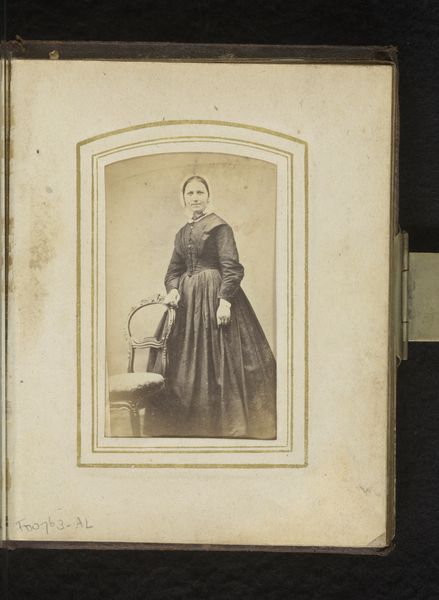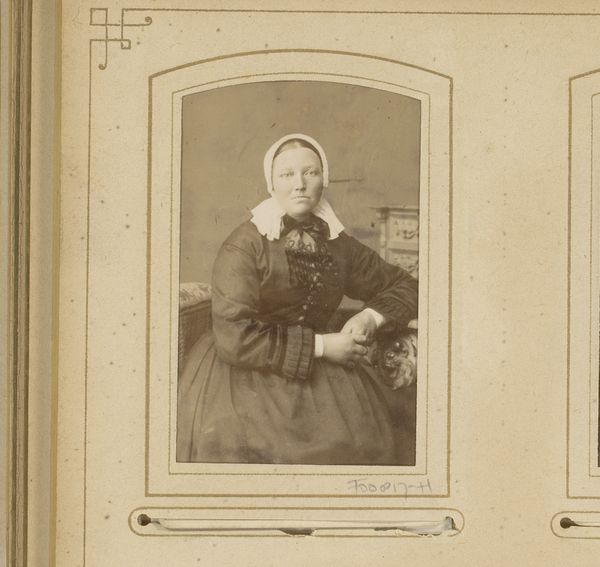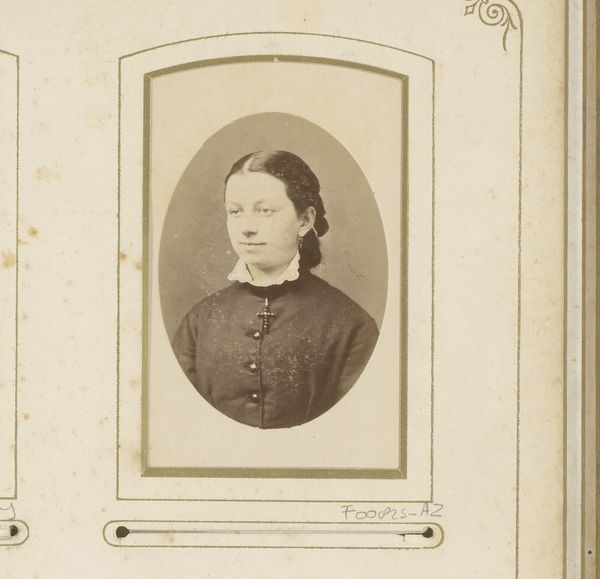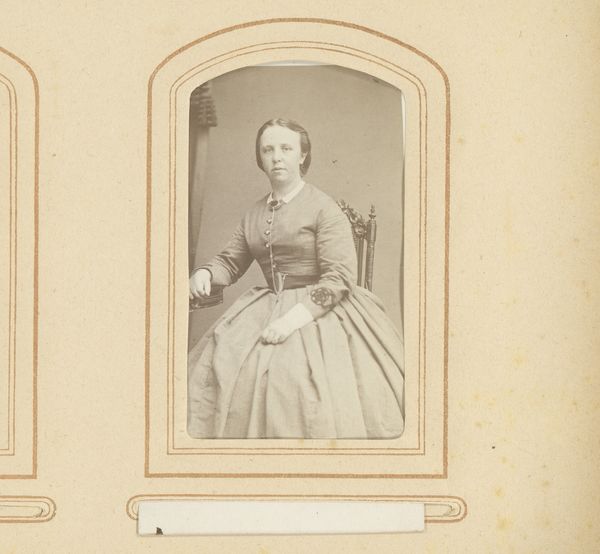
photography
#
portrait
#
photography
#
historical photography
#
19th century
Dimensions: height 86 mm, width 53 mm
Copyright: Rijks Museum: Open Domain
Editor: Here we have a photographic portrait titled "Portret van een zittende vrouw," or "Portrait of a Seated Woman," believed to be made between 1865 and 1887 by Jan George Mulder. It's… straightforward. What jumps out to you? Curator: I'm immediately drawn to the materiality of the photograph itself. The albumen print process, a product of its time, was central to democratizing image production. How does the industrialization of photographic processes during this era influence how we understand portraiture, particularly for those outside elite circles? Editor: That’s a really interesting angle. I was just thinking about the sitter’s expression, but you’re making me consider how access to these portraits changed society. Were they just trying to mimic the painted portraits that only wealthy people could afford before? Curator: Precisely. And consider the labour involved in each stage - the preparation of the photographic plates, the printing, even the sitter's dress, likely homemade. It all speaks to a growing consumer culture, accessible but still defined by constraints of production. Notice the polka dot pattern. Is it hand-stitched, mass-produced? This affects our interpretation. Editor: I see what you mean! It makes me consider all of the material objects and all the labor, hidden or visible. It is more than just a portrait. What do you think she is doing, or what’s her social status based on her clothing and adornments? Curator: Rather, I want to question *how* this portrait contributes to the history of images. The photograph enters circulation as a commodity in itself and part of a larger social-historical fabric that defines what portraiture meant, what consumption meant. It shapes our very definition of those terms. Editor: So, beyond just seeing a woman, we can see a snapshot, if you will, of burgeoning industrialism. That changes everything. I won't look at photographs the same way now. Curator: Exactly. It allows us to examine the complex interactions between art, labor, and the material conditions of life during a period of profound social change.
Comments
No comments
Be the first to comment and join the conversation on the ultimate creative platform.
